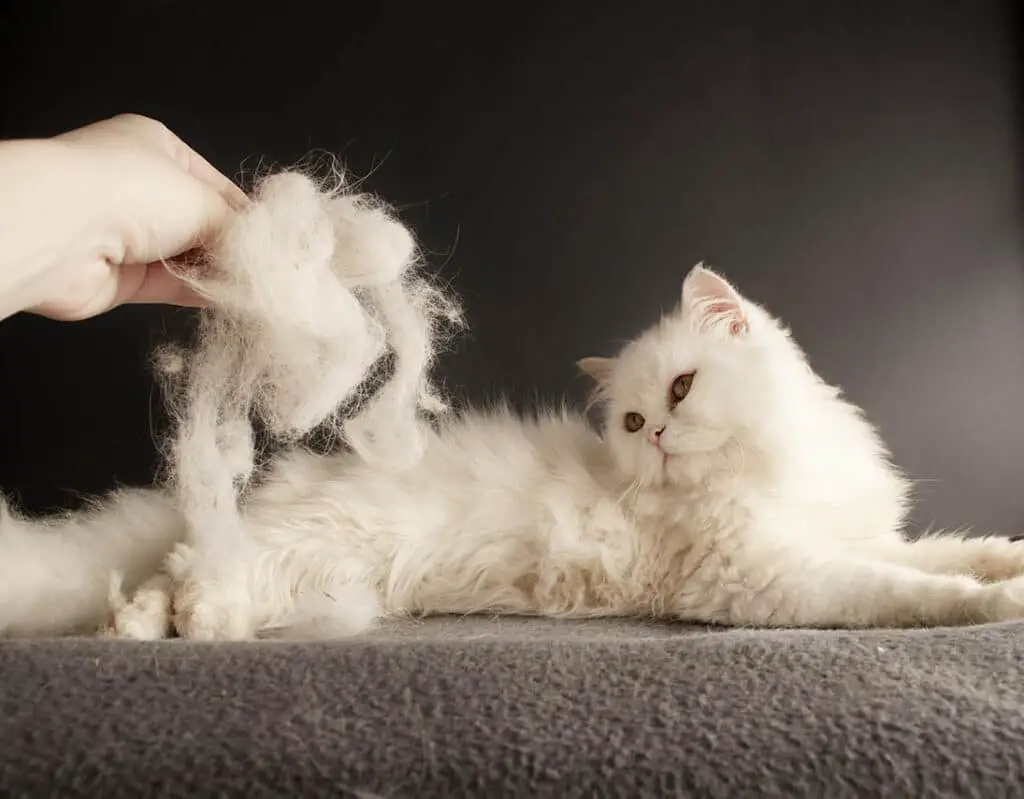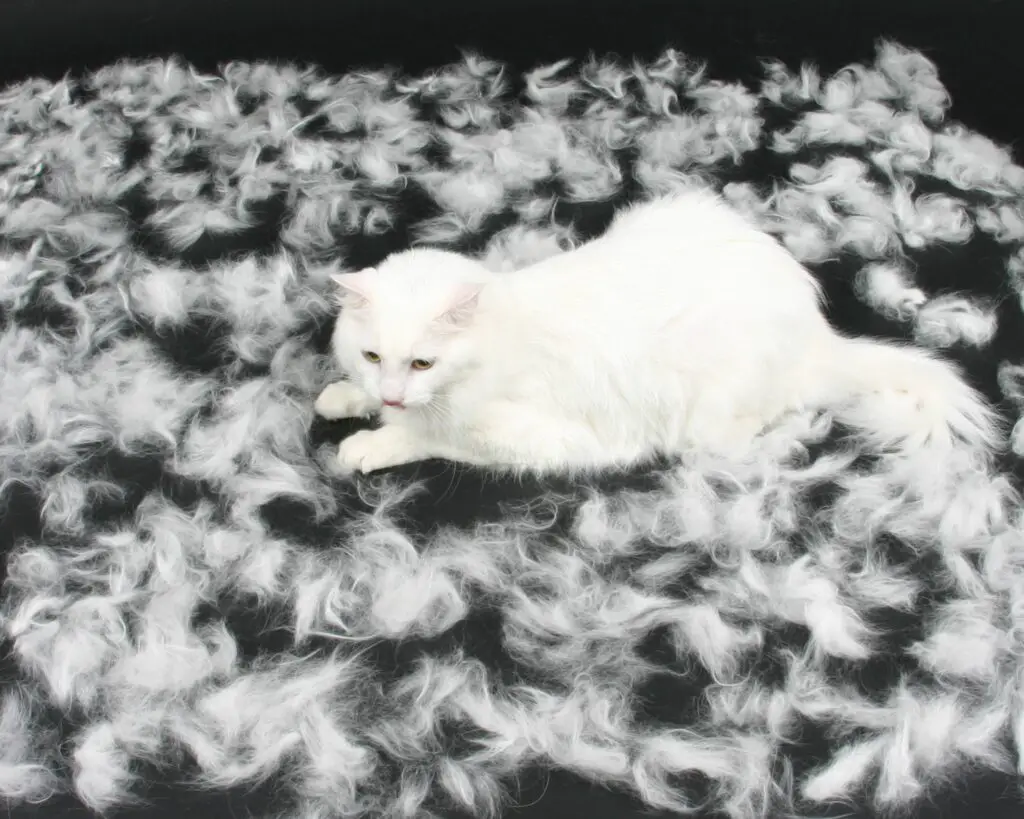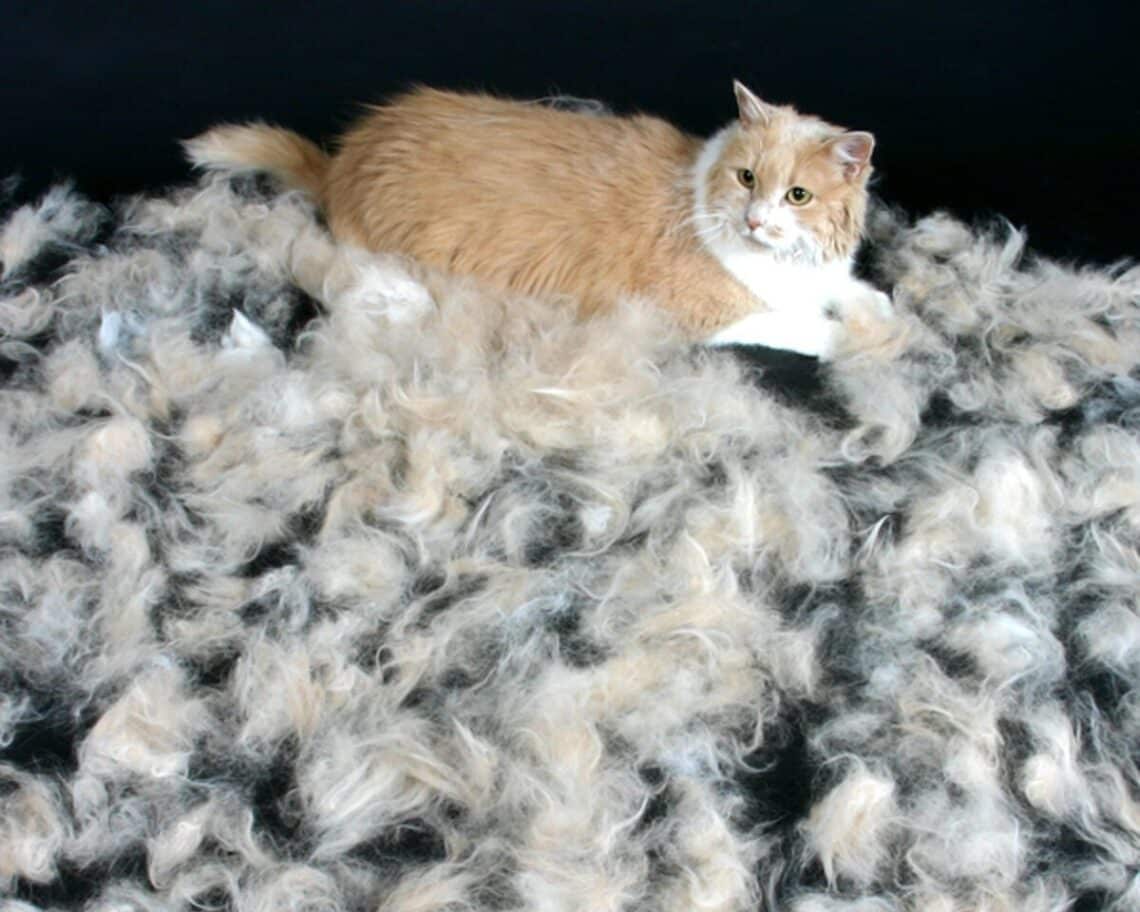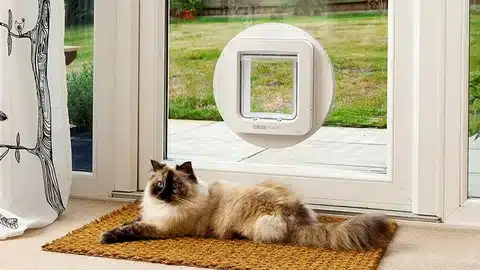Introduction
A Purrfect Solution: Introducing Cats That Don’t Shed
What Cats Don’t Shed: Cat lovers around the world know that the joy of having a feline companion comes with the responsibility of grooming and dealing with shedding. However, there are certain cat breeds that offer a welcome reprieve from the constant battle against fur. These special breeds are known for their minimal shedding, making them ideal choices for individuals with allergies or those seeking a low-maintenance furry friend. In this exploration, we’ll delve into the enchanting world of cats hair that don’t shed and discover the breeds that bring a breath of fresh air to pet ownership.
A Break from the Fur Storm: Cats That Don’t Shed
For cat enthusiasts who adore feline companionship but cringe at the thought of endless fur cleanup, the concept of cats that don’t shed offers a glimmer of hope. Shedding is a natural process in which cats lose old or damaged hair to make room for new growth. However, certain breeds have developed coat types that shed significantly less than others, making them a popular choice for those seeking a fur-minimizing solution.
Hypoallergenic Myths and Realities
Before diving into the breeds, it’s important to address a common misconception. While some breeds are touted as “hypoallergenic,” meaning they produce fewer allergens, no cat is completely allergen-free. The proteins that cause allergies are found in a cat’s skin, saliva, and urine, not just their fur. However, some hypoallergenic breeds are known to produce fewer allergens and shed less hair, which can reduce the frequency and severity of allergic reactions.

What breed of cat does not shed?
Cat Breeds That Don’t Shed Much. There are five main cat breeds that don’t really shed. Both the Sphynx and the Peterbald are mostly hairless, so they do not have fur to shed in the first place. Additionally, the Cornish Rex, Devon Rex, and Bengal have unique coats that lead to them not shedding very much.
Non-Shedding Cat Breeds
Sphynx: Perhaps the most famous non-shedding cat breed, the Sphynx is instantly recognizable due to its lack of fur. This breed’s hairlessness doesn’t mean it’s maintenance-free, as it requires regular bathing to remove oils that would typically be absorbed by fur. Nonetheless, the absence of shedding makes the Sphynx a popular choice for those looking for a hypoallergenic cat.
Cornish Rex: Known for its unique wavy coat, the Cornish Rex has a much finer and shorter layer of fur than most other breeds. This fine coat significantly reduces shedding, making it a preferred choice for people seeking a cat that doesn’t leave a trail of hair behind.
Devon Rex: Similar to the Cornish Rex, the Devon Rex boasts a short, curly coat that sheds minimally. Its fine fur is often compared to suede or velvet, and regular grooming helps maintain its texture and prevent excessive shedding.
Russian Blue: This elegant and affectionate breed has a dense double coat of fine fur that produces less allergenic proteins, reducing the risk of triggering allergies. The Russian Blue’s shedding is minimal, and its striking blue-gray coat only requires regular brushing to keep it in top condition.
Bengal: While not entirely non-shedding, Bengal cats have a short, luxurious pelt-like coat that produces fewer allergens and sheds less compared to other breeds. Their distinctive spotted or marbled markings add to their charm.
Do Bengal cats shed much?
Their shedding is minimal, which is why they appear to be a favourite breed among cat allergy sufferers. Still, there are some circumstances when Bengals might lose more hair than usual, including: Developmental shedding. Seasonal changes.
Understanding Bengal Cat Coats
Bengal cats are known for their distinct and alluring coats, which resemble those of wild leopard cats. Their coat is characterized by its short, dense, and soft texture, marked with distinctive rosettes or marbled patterns. This luxurious coat is a result of crossbreeding domestic cats with Asian leopard cats, creating a mesmerizing appearance that sets Bengals apart.
Shedding Tendencies
Bengal cats do shed, but their shedding tendencies can be somewhat different from those of other breeds due to their unique coat. While they don’t shed as much as long-haired breeds, Bengal cats still release loose fur during their natural shedding cycles. However, their short coat means that shedding tends to be less noticeable and easier to manage than breeds with longer fur.
Factors Influencing Shedding
Season: Like many cat breeds, Bengal cats tend to shed more during seasonal changes, particularly in the spring and fall. This is when their coat adapts to the changing weather conditions.
Grooming Routine: Regular grooming significantly influences shedding. Consistent brushing helps remove loose fur and prevents it from accumulating on furniture and clothing. Weekly brushing can effectively minimize shedding and maintain the coat’s health and luster.
Diet and Health: A balanced diet rich in essential nutrients promotes healthy skin and coat, reducing excessive shedding. Regular veterinary check-ups ensure your Bengal cat’s overall health and help address any issues that might contribute to shedding.
Why don’t some cats shed?
The only cats that do not shed fur are the purebred hairless cats, such as the Sphynx. This unusual cat is not totally hairless. She has a fine down on her body, rather like the fuzz on a peach. Some people say the skin of a Sphynx feels like suede or chamois.
Genetic Factors
Genetics play a pivotal role in determining a cat’s shedding tendencies. Cats that shed less often have inherited specific genetic traits that affect the growth and lifecycle of their fur. These traits can include:
Single Coat: Cats with a single coat, rather than the typical double coat, tend to shed less. Single-coated breeds have fewer layers of fur, leading to a reduced amount of shedding.
Hair Length and Texture: Cats with shorter and finer fur tend to shed less. The texture of the fur can influence how easily it gets caught in furniture and clothing fibers.
Absence of Undercoat: Undercoat is the soft, dense layer of fur that lies beneath the top coat. Breeds without a substantial undercoat shed less, as there’s less fur to be shed.
Less Active Hair Follicles: Some breeds have fewer active hair follicles, resulting in less overall shedding. This can be due to genetic variations that affect the growth cycle of the fur.
Breeds That Don’t Shed Much
Several cat breeds have gained popularity due to their minimal shedding tendencies:
Sphynx: This hairless breed is perhaps the most extreme example of low shedding. Without a coat to shed, the Sphynx is an ideal choice for individuals looking for a cat with virtually no shedding.
Cornish Rex: Known for its curly coat, the Cornish Rex sheds less because its fine fur is less prone to shedding compared to longer fur types.
Devon Rex: Similar to the Cornish Rex, the Devon Rex’s short, curly coat results in minimal shedding.
Russian Blue: This breed’s dense, short double coat sheds less, and its fur produces fewer allergenic proteins, making it suitable for those with allergies.
Bengal: While not entirely non-shedding, Bengal cats have a short coat that sheds less compared to other breeds. Their distinct coat patterns also help camouflage shedding.
Do indoor cats still shed?
All cats shed, no matter if they have short hair or long hair (other than, of course, hairless cats such as the Sphynx cat – but see below). However, an indoor cat’s shedding cycle isn’t as distinct as that of a cat who lives outdoors.
Factors Influencing Shedding in Indoor Cats
Seasonal Changes: Even though they live indoors, indoor cats can still experience shedding based on the changing seasons. This shedding is often less pronounced than in outdoor cats, but it’s influenced by changes in natural light and temperature.
Genetics: Different cat breeds have varying shedding tendencies. Some breeds naturally shed less than others due to their genetic makeup. Short-haired breeds, for instance, tend to shed less compared to long-haired breeds.
Health and Diet: A cat’s overall health and nutrition play a crucial role in its shedding patterns. A balanced diet rich in essential nutrients contributes to healthy skin and coat, reducing excessive shedding.
Grooming: Cats groom themselves to maintain their coat health. Regular grooming helps remove loose fur and prevents excessive shedding. However, indoor cats may groom less often than outdoor cats, leading to more noticeable shedding when grooming sessions do occur.
Managing Shedding in Indoor Cats
Regular Brushing: Brushing your indoor cat’s coat helps remove loose fur and prevents it from accumulating around your home. The frequency of brushing depends on the breed and coat type.
Diet and Nutrition: Providing your cat with a high-quality diet rich in omega-3 fatty acids and other essential nutrients promotes a healthy coat and reduces shedding.
Environmental Enrichment: Keeping indoor cats mentally and physically stimulated can reduce stress-related shedding. Interactive toys, scratching posts, and climbing structures can help engage your cat’s natural behaviors.
Regular Veterinary Check-ups: Routine visits to the veterinarian ensure your cat’s overall health, addressing any underlying issues that could contribute to excessive shedding.
Should I bathe my cat?
“In general, a healthy adult cat doesn’t require bathing unless he or she has gotten into something that has coated the fur and can’t be easily removed with brushing,” she says. “Cats groom themselves naturally, however their owners should help keep them clean by brushing or combing them regularly.”
Why Consider Bathing Your Cat
Allergies and Sensitivities: If you or a family member has allergies, bathing your cat can help reduce the amount of allergens present in their fur. Bathing can also remove environmental allergens that cats may pick up outdoors.
Skin Conditions: Cats with certain skin conditions, such as allergies, dermatitis, or flea infestations, may benefit from regular baths using a vet-recommended shampoo. Bathing can help soothe irritated skin and remove allergens or parasites.
Coat Health: Bathing can contribute to a healthier coat by removing excess oils and dirt. Cats with greasy or oily fur might benefit from occasional baths to maintain coat health.
Removing Substances: Cats that accidentally get into substances like paint, oil, or other chemicals may need a bath to prevent them from ingesting harmful substances while grooming.
Tips for a Successful Cat Bath
Prepare Ahead: Gather all the necessary supplies before beginning the bath, including a cat-specific shampoo, towels, and a non-slip mat for the bathing area.
Choose a Calm Environment: Find a quiet, calm space where your cat feels comfortable. Close doors and windows to prevent escapes.
Trim Nails: Trim your cat’s nails before the bath to reduce the risk of accidental scratches.
Gradual Introduction: Introduce your cat to water gradually. Start by letting them explore an empty tub, rewarding them with treats and praise.
Use Lukewarm Water: Fill the tub with lukewarm water to a level that covers your cat’s legs but not their head. Avoid using high-pressure water, as it can be frightening.
Gentle Handling: Gently place your cat in the water, keeping a firm hold on them to prevent slipping. Use a calm and reassuring tone throughout the process.
Are cats hygienic?
Just like sleeping, cleaning is an essential part of your cat’s day-to-day life. Cats are very hygienic animals that use their tongue to release loose hairs from their fur and grass, leaves or small accumulations of dirt, for instance, after using the cat toilet.
Grooming Instincts: A Key to Hygiene
Cats are renowned for their exceptional grooming habits, spending a significant portion of their waking hours engaged in self-care. Here are a few reasons why cats are considered hygienic animals:
Self-Grooming: Cats are equipped with tongues covered in tiny, hook-like structures called papillae. These papillae assist in cleaning and detangling their fur, effectively removing dirt, debris, and loose fur.
Oil Distribution: During grooming, cats spread natural oils produced by their skin throughout their fur. These oils contribute to the softness and shine of their coats while also providing a protective layer against environmental factors.
Stress Reduction: Grooming is also a way for cats to manage stress. The act of licking and grooming themselves has a soothing effect, helping cats to relax and feel more comfortable.
Oral Hygiene: Cats groom their teeth and claws as well, which can help maintain dental health and prevent the accumulation of harmful bacteria.
Should I give my cat milk?
Most cats are actually ‘lactose intolerant’ as they don’t have the enzyme (lactase) in their intestines to digest the sugar in milk (lactose), meaning that milk which contains lactose can make them poorly. They can get vomiting, diarrhoea and stomach pain from drinking it (just like lactose intolerance in humans).
Why Milk is Not Ideal for Cats
Lactose Intolerance: Many adult cats are lactose intolerant, meaning they lack sufficient amounts of the enzyme lactase needed to digest lactose, the sugar found in milk. Consuming milk can lead to gastrointestinal upset, including stomach cramps, gas, diarrhea, and vomiting.
Nutritional Imbalance: Cats have specific dietary requirements that need to be met to maintain their health. While milk contains calcium and protein, it doesn’t provide a well-rounded nutritional profile that cats require. Feeding your cat a balanced and specially formulated cat food is essential for meeting their nutritional needs.
Caloric Intake: Milk is relatively high in calories, and overindulgence can lead to weight gain in cats. Obesity is a serious health concern that can lead to various health issues, including diabetes, joint problems, and heart conditions.
Alternatives to Milk for Hydration
Water: The most important and suitable drink for cats is plain, fresh water. Always provide a clean bowl of water for your cat to drink from. Hydration is crucial for their overall health and well-being.
Canned Cat Food: Canned cat food typically contains higher moisture content than dry kibble, contributing to your cat’s hydration. If your cat prefers moist food, this is a better way to provide them with additional fluids.
Cat Milk Replacements: If you’re interested in giving your cat a milk-like treat, there are specially formulated cat milk replacements available in pet stores. These products are designed to be lactose-free and safe for cats to consume.
Do cats need nails trimmed?
Trimming a cat’s claws every two to three weeks is an important part of maintaining your pet’s health. Not only does a quick trim protect you, your pet and your family, it can also save your sofa, curtains and other furniture.
Why Trim Cat Nails
Preventing Overgrowth: Cats’ nails continuously grow, and if left unchecked, they can become too long. Overgrown nails may curl back into the paw pads, leading to discomfort, pain, and potential infection.
Minimizing Scratching Damage: Long nails can cause unintentional damage to furniture, flooring, and even human skin during play or affectionate interactions.
Reducing Accidental Scratches: Regular nail trims can help prevent accidental scratches, which can be particularly important if there are children or elderly individuals in the household.
Preventing Injury: Cats with overgrown nails might snag their nails on objects, leading to potential injury or even torn nails.
When to Trim Cat Nails
Frequency: The frequency of nail trims depends on the individual cat. Cats that spend more time indoors might require more frequent trims, while outdoor cats may naturally wear down their nails through scratching on surfaces.
Check Paw Pads: Regularly check your cat’s paw pads for signs of discomfort, such as nails curling into the pad or redness/swelling around the nails. If you notice these signs, it’s time for a trim.

Conclusion
In the world of feline companionship, the search for a cat that doesn’t shed becomes an exploration of both practicality and passion. While no cat is entirely free from allergens, certain breeds have emerged as champions of minimal shedding, offering a respite from constant fur maintenance. These hypoallergenic and low-shedding breeds provide a pathway for individuals with allergies or those seeking a cleaner living environment to experience the joys of feline companionship without the overwhelming fur battle.
From the enigmatic Sphynx and the captivating Cornish Rex to the regal Russian Blue and the playful Bengal, each of these breeds brings a unique charm and personality to the table. Their coats, whether hairless, curly, or short, offer a visual and tactile delight that is complemented by their distinct behaviors and temperaments. The promise of less shedding doesn’t diminish the love and affection these cats offer; rather, it enhances the experience of caring for a feline friend.
While low-shedding breeds may require less maintenance when it comes to fur cleanup, responsible grooming remains a cornerstone of their well-being. Regular brushing, bathing, and care ensure their coats remain healthy and reduce allergen exposure.
In a world where the bond between humans and cats is celebrated, the availability of breeds that shed less speaks to the adaptability and diversity of these remarkable creatures. The pursuit of a cat that doesn’t shed opens doors to new possibilities, allowing individuals to forge meaningful connections with their feline companions without the constant fur concern. Whether motivated by allergies, aesthetics, or convenience, the journey towards a low-shedding cat is a testament to the deep love and commitment shared between humans and their four-legged friends.





No Comments